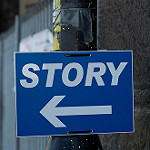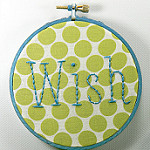By Kristin Nelson & Angie Hodapp
For the Part 1 of this article series, click here.
Angie Hodapp and I recently teamed up to bring wit and wisdom to writers working on craft. During our workshop, we identified story openings that usually spell trouble for aspiring writers looking for representation.
In fact, we’re offering a three-part webinar-workshop called “Opening Pages That Lead to Yes.” It starts August 4. Want to sign up? Click here.
First, a word of caution. Take everything we are going to highlight in this series with a grain of salt. If a writer has mastered craft, he or she can get away with any type of opening and make it work—even one of the nine types we are going to suggest that you avoid! So much depends on a writer’s mastery of voice, style, and scene craft.
Trust me, there is that 1% of writers out there who can break all the rules and make their stories work spectacularly. But do you want to bet that you are among that 1%? That’s quite a gamble! If, however, you think maybe you’re among the other 99% percent, then this series is for you. We read hundreds of sample pages every month, and the nine types of openings we’re going to share with you in this series often don’t work because they are overused or have become crutches for writers who haven’t yet mastered craft. Avoid these openings, and you will automatically increase your chances of standing out in the slush pile!
Your opening pages might be in trouble if…
#2) Your novel opens with White Room Syndrome.
In other words, you may have succeeded at putting at least one character on the page, and maybe some sort of action, too, but you’ve forgotten to share any details about your setting. Does your opening scene occur inside or outside? At night or during the day? In cold weather or hot? Where is your character, what’s nearby, and how does this environment affect him or her in this scene? Omit such details, and your reader has no choice but to imagine that your story is taking place in a “white room.”
Anchor your reader in time and place in your manuscript’s opening pages—this is the number-one comment I make when I do critiques at conferences.
As Angie will now discuss, there are several tips and tricks you can use to identify and revise White Room Syndrome (WRS) in your own opening scenes:
a.) Does your story start with a lengthy passage of dialogue? This might be the number-one indicator of WRS. Check your opening scene and make sure that your characters’ words aren’t hanging in the air in a white room. Without a sense of setting (time and place), the reader is left with no idea of where the characters are, why they’re there, and how this conversation might be important to the story.
b.) Character is to Voice as Setting is to Atmosphere. Just as you choose your words carefully to give your character a distinctive voice, choose your words carefully to imbue your setting with a sense of atmosphere—one that supports the overall mood of the scene. Consider:
Beatrice sauntered into the bordello’s frilly parlor, the plush pink carpet muffling the clank-clank-clank of her silver spurs.
Beatrice crept through the shadows of the bordello’s dusty parlor, the clank-clank-clank of her silver spurs echoing off the creaky floorboards.
In the first sentence, Beatrice is sauntering, and the setting is frilly, plush, and pink. In the second, Beatrice is creeping, and the setting is dusty and creaky, with shadows and echoes. Were each of these the first sentence of a novel, my readerly imagination would be set up for a very different sort of story. The words you choose to lend your setting atmosphere matter.
c.) Does your setting impinge on your character’s senses? We know we’re supposed to use all five senses in our fiction—sight, sound, touch, smell, and taste. But this tip takes that advice a step further. Consider:
Bob sat behind the wheel of the getaway car, eyes peeled on the front door of the bank. It was hot and sunny, and he was sweating, and the front seat was too cramped for his three-hundred-pound frame. He tore the wrapper off another Ding Dong and took a bite. It was time, he decided, that the gang ditched the Chevelle and invested in a van.
Bob sat in the getaway car, the steering wheel digging painfully into his ample gut. Sweat plastered his tee shirt to his chest and back. He shaded his eyes from the sun beating down on him through the Chevelle’s cracked windshield and squinted at the front door of the bank. He tore into another Ding Dong. It was time, he decided, that the gang invested in a van.
In both passages, the setting includes the interior of a getaway car and a hot sun. But only in the second passage are these setting elements doing something to Bob. The steering wheel is digging painfully into his ample gut. The sun is beating down on him, making his sweat plaster his clothes to his body. In this passage, the setting is not only present, but it’s also impinging on the character in such a way that he can’t ignore it—and neither can the reader. Look for ways to make your setting impinge on your character, not just in your opening pages, but throughout your manuscript!
Check your opening pages for WRS. Better yet, give your first scene to a friend or critique partner, and then ask them to describe the setting they imagined when they read it. Does it match what you imagined when you wrote it? If not, then we hope these tips will help you revise!
Creative Commons Photo Credit: MazZuk










